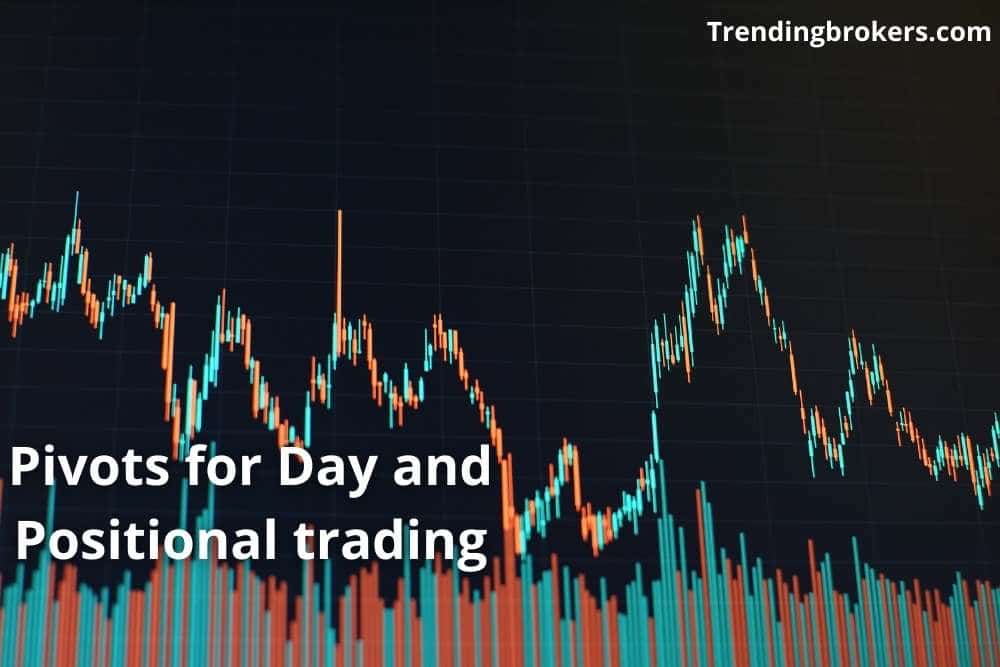Today, we’ll look at the importance of Pivot Points in day trading. One of the most extensively utilised indicators in day trading is pivot points. The program generates a specific plot of seven support and resistance situations that can be used to identify intraday request turning points. Price tends to reply to these situations since numerous request actors keep note of them.
A pivot point is a specialized analysis index that uses the high, low, and close price for a specified time in the previous period to indicate unborn support. Other modest computations are also used to calculate the outside points. They can be colluded automatically on a regular basis. Still, dealers frequently detect their own support and resistance situations by looking for literal turning points in the request.
These can be used to determine the price boundaries of a stock over various time periods, giving traders an advantage in the market.
How to calculate pivots for day and positional trading?
Some charting software applications that allow you to configure the indicator can generate pivot points for various timeframes. Some applications, for example, may allow you to determine pivot points on a weekly or a monthly basis. On the other hand, one can plot the standard indication on a daily basis.
The point, often known as the central price level, is determined using the previous day’s high, low, and close. These numbers are added together and divided by three. This is the same idea as a standard price.
Pivot Point = [High (previous) + Low (previous) + Close (previous)] / 3
Three support levels and three resistance levels make up the remaining six price levels. Again, the pivot point’s value is used in all calculations.
The three degrees of help are referred to as support 1, support 2, and support 3. Resistance 1, resistance 2, and resistance 3 are the three levels of resistance. Read more about Support and Resistance levels.
Because price levels are determined by the previous day’s high, low, and close, the broader the range between these values, the greater the gap between levels on the following trading day. Similarly, the smaller the trading range, the smaller the gap between levels the next day.
It’s worth noting that not all levels will appear on a chart at the same time. This merely implies that the price chart’s scale prevents some levels from fitting within the viewing frame.
This is why the pivot point formula’s basic pivot level is so important. As a result, you must take extreme caution while determining the PP level. After all, if you miscalculate the PP value, the rest of your computations will be incorrect.
Significance of seven Pivot point levels
There are seven basic pivot levels on the chart:
PP (Basic Pilot Level) – Middle p. point
R1 (Resistance 1) – First pivot level above the middle p. point
R2 (Resistance 2) – Second pivot level above the middle p. point
R3 (Resistance 3) – Third pivot level above the middle p. point
S1 (Support 1) – First pivot level below the middle p. point
S2 (Support 2) – Second pivot level below the middle p. point
S3 (Support 3) – Third pivot level below the middle p. point
History of Pivot Points
Pivot points were first used by stock exchange floor traders. They calculated a pivot point for the current trading day using the previous day’s high, low, and close prices.
Using this formula, they were able to spot critical levels throughout the trading day. As a result, traders regard points as leading indicators because they have predictive capabilities.
The most crucial price level for the day is the main pivot point. In essence, it denotes the equilibrium of bullish and bearish forces.
In other words, the stock market is deemed bullish when prices are above the pivot point. Conversely, if prices fall below the pivot point level, the market is considered to be bearish.
Floor traders first utilized pivots, but they are now widely used by retail traders, particularly in equities and FX. Know how to use pivots for trading.
Why are pivots beneficial for day and positional trading?
The pivot points formula is a formula that uses data from the previous trading day to calculate the current trading day’s price. So the levels you’re looking at are only relevant for today’s trading session. Pivot points are, as a result, the ultimate one-of-a-kind indicator for day trading.
The points in the charts provide a plethora of information. The indicator, as previously said, gives seven separate trading levels. This should be sufficient to get a day trader through the trading session. However, the indicator can only be used on shorter time frames because the pivot points data is from a single trading day. The daily and 30-minute charts will not work since just one or two candles will be visible.
TThe pivot indicator works best in 1-minute, 2-minute, 5-minute, and 15-minute timeframes. As a result, day traders employ it. The PP indicator is a simple trading tool to utilise. This type of indicator is available on the majority of trading platforms. This implies you won’t have to compute the individual levels. Your only responsibility will then be to trade the indicator’s bounces and breakouts.
Learn how to trade stocks, futures, and exchange-traded funds (ETFs). Pivot indicator is one of the most precise indicator tools. This is because many day traders, both professional and retail, employ the indicator. This will enable you to trade with confidence and in sync with the market’s currents.
Daily pivot points can be used to determine the possible range, or supports and resistance, for the following day. It aids in the planning of the next day’s trading. Similarly, the weekly pivot is completed at the conclusion of each week, and the monthly pivot is completed at the end of each month.
The idea is that, as technical analysts, we try to predict future price direction by looking at past price behavior. However, while this will not assist in forecasting the future, it will provide an indication of where the price could go in a given period based on where it has been.
Limitations of Pivots for day and positional trading
Another critical feature of pivots is that they allow you to detect whether you are in a losing transaction rapidly.
You’re probably in trouble if you go long in a move on a break of one of the levels of resistance and the stock rolls and returns below it. This should give you pause for thought if things don’t go as planned.
This does not imply you should flee to the hills, but it does indicate you should pay close attention to price activity at this vital juncture.
Another thing to think about is the quantity of time that passes after you’ve started your job. The stock is screaming caution flags if your position is resting below or just around the breakout level 30 minutes after starting the trade.
Exiting bad deals should not be overthought. If you find yourself in a trade that is stalling or failing to hold a level, simply exit it. Waiting for things to happen can result in even more losses. Aside from the financial implications, you’ll have to deal with the emotional upheaval that comes with such a loss.
5 Types of Pivot Points
The five most common pivot points are listed below.
Standard pivot
The most fundamental pivot points that day traders can compute are standard pivot points. Traders begin by establishing a base pivot point. That’s the average of the high, low, and closing prior period.
Woodie’s Pivot
The closing price is given more weight in Woodie’s pivot points. The calculation, however, is very similar to the usual pivots formula.
Fibonacci Pivot
Among traders, the Fibonacci pivot point is likely the most well-known. Fibonacci extensions, retracements, and projections are popular in forex, but they can also be employed in equities. A mathematical series is named after the Fibonacci retracement levels.
Camarilla Pivot
Camarilla pivot points are another type of pivot point used by traders. In the 1980s, Nick Scott devised the Camarilla pivot point.
It’s similar to the pivot point on the Woodie. There are, however, four levels of resistance and four levels of support. The Woodie pivot point, on the other hand, has two Resistance levels and two Support levels.
Demark Pivot
The opening and closing prices of Demark pivot points have a varied connection. This version was presented by well-known trader Tom Demark.
The lower level line and upper resistance level are calculated using the number X by the Demark pivot point. It also highlights recent price movements.
Uses of Pivot Points
Pivot points were first utilized in the stock and futures markets, but they have since been similar to day trading in the forex market.
The points have the characteristic of being a reliable indicator, which means that traders may use them to predict probable market turning points ahead of time. They can serve as trade entry targets by acting as support or resistance, or they can serve as stop-loss or take-profit levels.
To truly obtain the upper hand on the market takes time and experience, just like any other trading method. As a result, practicing Pivot Points in a simulator is the best way to go. However, before putting real money on the line, we recommend using this method for at least three weeks and reviewing the trades.
The primary attention is on the pivot point, which is the middle line and the level from which everything else is calculated. If the price is trading above the point, the market is likely to be positive for the day trading. Here are Successful day trading strategies to book more profit
Bottom Line
A trader can use pivot points to assist assess probable support and resistance areas. Because prices oscillate between these levels, pivots can be immensely valuable in stock, commodity, and forex trading. The price fluctuates between R1 and S1 most of the time. Standard, Woodie, Fibonacci, camarilla, and demark are the five basic methods for calculating pivot points.
Range, breakout, and trend traders can all benefit from pivot points. For example, a range-bound trader will place buy and sell orders at the support and resistance levels, respectively. The points also assist traders in weeding out stocks that lack the necessary momentum to break essential levels.
Capitalix signal Centre provides investors with access to research, including trading signals on the Forex, commodity, and index markets.


